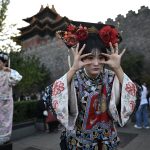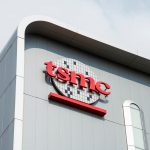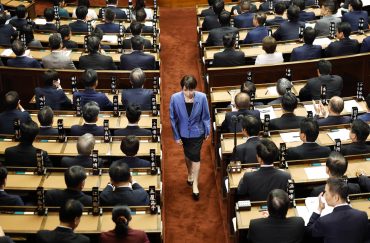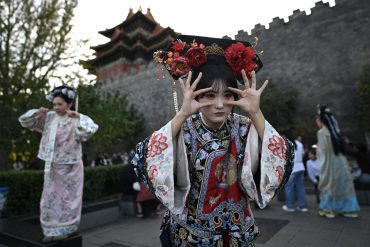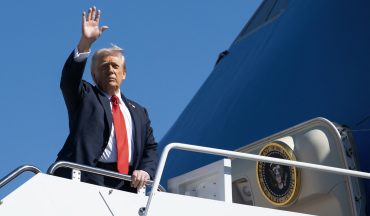
- Rare Earths
- Semiconductors
- Trade Policy
The Pacific Realignment: Trump’s Strategic Wager in Asia
12 minute read

President Trump’s five-day Asia tour tests U.S. trade, technology, and rare-earth strategy across Malaysia, Japan, and South Korea amid tariff brinkmanship.
Key Takeaways
-
Trump’s Asia tour recalibrates $1 trillion in trade flows — Kuala Lumpur, Tokyo, and Gyeongju summits target semiconductor supply chains, rare-earth dependence, and tariff alignment under new U.S. leverage.
-
Rare-earth export curbs reshape industrial policy — China’s October 9 magnet controls lifted global prices up to 40 percent, exposing critical mineral vulnerabilities across ASEAN, Japan, and Korea.
-
Xi-Trump meeting sets global stakes — Expected tariff moratoriums and quota adjustments could steady markets, yet failure risks a bifurcated Pacific economy and enduring tech-ecosystem split.
Introduction
President Donald Trump’s five-day passage through Asia, departing Washington on October 25 for stops in Kuala Lumpur, Tokyo, and Gyeongju, represents more than diplomatic routine. The itinerary, confirmed by the White House two days before departure, arrives at an inflection point where trade architecture, technological supremacy, and geopolitical alignment converge with unusual force. This is statecraft conducted in a region that produces three-fifths of global semiconductors and refines four-fifths of rare earth elements—a geography where policy adjustments register immediately in capital flows, defense postures, and the calculus of corporate investment committees from California to Korea.
The tour’s structure reveals its ambition. Three multilateral forums—the ASEAN Summit in Malaysia, bilateral consultations in Japan, and the APEC gathering in South Korea—provide sequential opportunities to address what the administration frames as interlocking vulnerabilities: semiconductor supply concentration, critical mineral dependencies, and tariff regimes that have begun fragmenting rather than integrating markets. Each stop carries specific economic weight. Malaysia’s electronics exports to the United States exceed $45 billion annually. Japan channels $550 billion toward advanced manufacturing partnerships. South Korea’s technology conglomerates have pledged $350 billion in U.S. investments contingent on tariff clarity. The aggregate exposure approaches $1 trillion in bilateral trade flows, making this less a goodwill expedition than a recalibration exercise with immediate market consequences.
What distinguishes this engagement from prior Asian tours is its concentration on chokepoints rather than abstractions. The semiconductor question alone spans fabrication capacity, lithography equipment licensing, and the rare earth inputs essential to advanced packaging. China’s October 9 announcement of export controls on permanent magnets—critical components in everything from precision motors to missile guidance systems—shifted pricing by 35 to 40 percent within days, exposing the fragility of supply chains that had operated on assumptions of uninterrupted access. The U.S. response, tightening its own export restrictions on advanced lithography tools, created a mirror image of vulnerability. Both actions underscored a reality that diplomatic language often obscures: interdependence, when weaponized, generates costs that neither transactional deals nor rhetorical postures easily resolve.

Malaysia: Testing Regional Cohesion
The ASEAN Summit in Kuala Lumpur, where Trump arrives October 26, offers the first test of whether regional economics can be reshaped without rupturing existing arrangements. The United States has imposed 19 percent tariffs on Malaysian electronics, a levy that Prime Minister Anwar Ibrahim’s coalition views as incompatible with the $10 billion infrastructure partnership both sides have discussed. The proposed bargain follows a familiar pattern: tariff relief in exchange for supply chain diversification away from Chinese intermediaries. Yet the execution proves complex. Malaysia’s electronics sector depends substantially on components sourced through Shenzhen and assembled in Johor, a production sequence that cannot be rapidly reconfigured without accepting higher costs or reduced output.
The rare earth dimension compounds the challenge. China’s licensing requirements for magnet exports, formalized in Announcement No. 61, directly affect Malaysia’s nascent processing facilities. Trump’s delegation, led by Trade Representative Jamieson Greer, arrives with proposals for an ASEAN-wide commitment to Australian and U.S.-backed mining projects—a $2 billion framework designed to reduce the bloc’s roughly 60 percent reliance on Chinese refining capacity. The logic is straightforward: diversify sourcing before Beijing’s market position becomes unassailable. The politics are less tractable. ASEAN members, particularly those with significant Chinese investment in port infrastructure and telecommunications networks, face pressure to maintain equidistance between competing powers. Recent polling underscores this tension, with a majority of Malaysians expressing a preference for balanced relations amid superpower rivalry.
The summit also confronts ASEAN’s internal fractures. Myanmar’s descent into sustained conflict and Cambodia-Thailand border tensions, both involving Chinese-supplied weaponry, have strained the bloc’s cohesion. A Thai-Cambodia truce, if brokered during Trump’s presence, would provide a tangible deliverable and establish a template for managing regional disputes without defaulting to Beijing’s mediation. The economic stakes are substantial: tariff resolution could lift ASEAN equities by 5 to 7 percent, while continued deadlock would pressure indices already unsettled by rare earth volatility. Markets interpret this summit not as theater but as a mechanism for determining whether Southeast Asia’s $3.6 trillion economy tilts toward integration with U.S. supply chains or accommodates the gravitational pull of the Regional Comprehensive Economic Partnership, where China’s influence predominates.

Japan: The Alliance Under Financial Scrutiny
Tokyo presents different dynamics. Prime Minister Sanae Takaichi, who assumed office in September, has signaled continuity with the defense commitments established during the Trump-Abe era while pressing for reciprocity on trade matters. Japan’s $550 billion investment pipeline, which includes funding for Intel’s Arizona fabrication facility and TSMC’s Kumamoto expansion, depends on U.S. willingness to ease export licensing for extreme ultraviolet lithography equipment. These tools, manufactured by ASML with Japanese component suppliers, enable the sub-3-nanometer chip production essential for AI applications and advanced defense systems. Takaichi’s position is clear: Tokyo will maintain financial commitments to U.S. manufacturing capacity, but American export controls cannot simultaneously restrict the tools needed to make that capacity competitive.
The rare earth question assumes particular urgency in Japan, where imports from China still account for over 60 percent of supply, down from historic highs but vulnerable to recent curbs. Beijing’s magnet licensing regime threatens $200 billion in automotive and electronics output, sectors that form the backbone of Japan’s export economy. Trump’s proposal for co-developing Lynas Corporation’s Australian operations offers an alternative, though the timeline for achieving sufficient scale remains uncertain. The immediate challenge involves protecting yen-denominated assets from commodity price shocks that have already pushed certain rare earth prices up 40 percent since October 9. A memorandum of understanding on joint mineral development would provide markets with assurance that alternatives to Chinese supply are advancing, even if full substitution remains years distant.
Tariffs on Japanese steel—currently 15 percent—add friction to the bilateral relationship. Takaichi seeks exemptions linked to enhanced THAAD missile defense rotations, particularly after North Korea’s recent ballistic missile tests ahead of the tour. The linkage between trade relief and security commitments reflects a transaction Trump understands, but it also illustrates the complexity of maintaining alliance cohesion when economic interests diverge from strategic imperatives. Japan’s economic entanglement with China, including $170 billion in intermediate goods trade, means Tokyo cannot pursue confrontational policies without accepting significant adjustment costs. The result is calibrated hawkishness—sufficient to satisfy domestic political constituencies while avoiding ruptures that would destabilize Japanese firms operating across integrated regional supply chains.

South Korea: Industrial Policy and Geopolitical Risk
By the time Trump reaches Gyeongju for the APEC Summit on October 29, the tour’s accumulated momentum meets its most acute test. President Lee Jae-myung governs with a narrow majority, and his political survival depends substantially on delivering tariff relief for South Korea’s automotive and electronics sectors. Current U.S. duties of 25 percent on Hyundai exports have idled a fifth of Daegu production capacity, creating employment pressures that opposition parties have exploited. Lee’s proposed exchange—automotive tariff exemptions for Samsung’s $17 billion Texas fabrication expansion—represents the kind of concrete bargain Trump favors, yet it requires congressional acquiescence that remains uncertain.
The semiconductor dimension extends beyond bilateral trade. Harmonizing export controls on gallium and germanium, materials China has also restricted, could strengthen the Chip 4 alliance linking the United States, Japan, South Korea, and Taiwan. Without coordination, DRAM prices face a projected 15 percent increase, eroding the $100 billion trade surplus that stabilizes Korea’s external accounts. Defense cooperation adds another layer: $3 billion in AI-integrated drone systems for THAAD installations hedge against North Korea’s expanding arsenal while preparing for potential Taiwan contingencies. Lee’s push for U.S. financing of Pohang’s rare earth refining capacity addresses the same mineral vulnerabilities affecting Japan and Malaysia, suggesting that regional security increasingly hinges on resource diversification rather than purely military arrangements.
The domestic political context remains precarious. GDP growth forecasts of 0.8 percent fall short of the levels needed to absorb employment disruptions from tariff-affected industries. Opposition filibusters have slowed Lee’s legislative agenda, and public sentiment reflects unease with over-reliance on China, with majorities viewing ties as essential yet precarious. Success in Gyeongju, measured by stabilizing the KOSPI index after its 4 percent decline, requires more than presidential handshakes. It demands credible mechanisms for managing decoupling costs that the Center for Strategic and International Studies estimates at $300 billion regionally by 2030.

The Xi Meeting: Transaction or Transformation
The tour culminates October 30 near Busan, where Trump and Xi Jinping will conduct their first face-to-face meeting since 2019. The encounter occurs against a November 1 tariff deadline and follows China’s strictest rare earth export controls to date. Beijing’s Announcement No. 61 has disrupted key U.S. imports while demonstrating China’s willingness to leverage its 80 percent share of rare earth refining capacity. Trump’s threatened 100 percent tariff on Chinese goods provides symmetrical leverage, creating conditions for negotiation even as both sides acknowledge the costs of continued escalation.
The agenda spans fentanyl precursor controls, agricultural purchases, and Taiwan arms sales—issues where incremental progress appears feasible without resolving fundamental strategic competition. Trump seeks exemptions for non-military AI applications, potentially easing restrictions on specific Huawei products in exchange for Boeing aircraft orders. Xi presses for relief from lithography export controls that have reduced China’s advanced semiconductor output by 30 percent since 2018. Taiwan remains the unspoken constraint: Trump’s $2 billion arms commitment signals continued support, while Xi’s recent rhetoric about “profound changes” suggests patience has limits. The risk, as analysts note, is that stability language intended to calm markets may instead embolden Beijing while failing to deter assertive actions.
Market positioning reflects cautious optimism. Prediction markets assign low probability to tariff implementation by November 1, a view that has lifted Bitcoin above $111,000 and pushed S&P futures higher. The base case anticipates modest achievements: tariff moratoriums, rare earth quota adjustments to 100,000 tons annually, fentanyl enforcement benchmarks. These would insulate supply chains from near-term disruptions without resolving the structural divergence between U.S.-allied advanced node production and China’s focus on legacy fabrication capacity. Yet the alternative—continued fragmentation—carries costs both sides recognize: higher prices for manufactured goods, reduced innovation efficiency, and the entrenchment of parallel technology ecosystems that duplicate effort while restricting market access.
The meeting tests whether transactionalism can produce durable arrangements or merely postpones adjustments that geopolitical competition makes inevitable. A successful outcome resets expectations for 2026, providing corporations with planning visibility and governments with breathing room to develop alternative supply sources. Failure entrenches the bifurcation already underway, where interdependence yields to managed separation and the Pacific divides into overlapping but increasingly distinct economic spheres. Trump’s Asia tour, for all its carefully choreographed bilaterals and summit appearances, ultimately wagers that pragmatic bargaining can still shape outcomes in a region where strategic rivalry grows more pronounced each quarter. Whether that wager succeeds will become evident not in joint communiqués but in the investment decisions, alliance commitments, and supply chain reconfigurations that follow in the months ahead.
